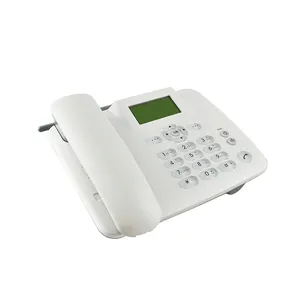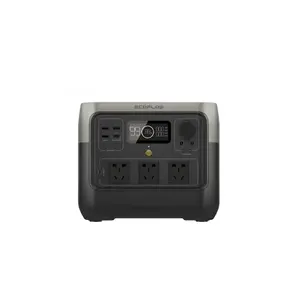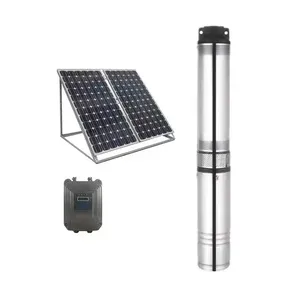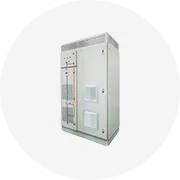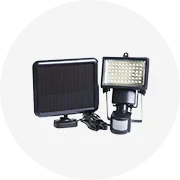Phổ biến trong ngành của bạn
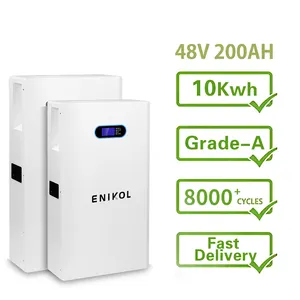
Năng lượng mặt trời treo tường 10kwh powerwall 15kwh nhà 48v pin lithium 100ah 200ah 48v pin lifepo4
16.913.897 ₫ - 28.969.818 ₫
Đơn hàng tối thiểu: 2 Cái
Vận chuyển mỗi chiếc: 7.401.420 ₫


Stackable năng lượng lưu trữ 48V 200AH 10kwh 20kwh 30kwh 51.2V 100AH 5kwh biến tần pin năng lượng mặt trời hệ thống điện LiFePO4 Pin
5.595.575 ₫ - 18.821.480 ₫
Đơn hàng tối thiểu: 1 Cái


51.2V 5kwh 10kwh 15kwh 20kwh pin năng lượng mặt trời gắn Pin lưu trữ năng lượng Lithium Ion LiFePO4 cho hệ thống năng lượng gia đình
10.122.904 ₫ - 16.252.602 ₫
Đơn hàng tối thiểu: 2 Cái


200AH 300ah Stackable 48V 100AH pin lithium 10kwh 20kwh LiFePO4 pin hệ thống lưu trữ năng lượng

15.260.659 ₫ - 18.185.619 ₫
Đơn hàng tối thiểu: 2 Cái
Vận chuyển mỗi chiếc: 5.188.625 ₫


Powerwall 51.2V 10kwh LiFePO4 nhà pin năng lượng mặt trời lưu trữ năng lượng LiFePO4 pin lithium 200AH
30.012.630 ₫ - 34.590.827 ₫
Đơn hàng tối thiểu: 1 Cái
Vận chuyển mỗi chiếc: 10.384.370 ₫


LiFePO4 năng lượng mặt trời lưu trữ năng lượng pin 12V 100AH 200AH 300ah pin lithium 12V LiFePO4 pin năng lượng mặt trời tắt hệ thống lưới điện chia
4.451.026 ₫ - 4.552.764 ₫
Đơn hàng tối thiểu: 1 Cái

Cao bán LiFePO4 280ah 3.2V pin 280ah 300ah lithium có thể sạc lại pin sử dụng cho nhà năng lượng lưu trữ
1.068.247 ₫ - 1.167.441 ₫
Đơn hàng tối thiểu: 4 Cái
Vận chuyển mỗi chiếc: 7.153.434 ₫

Hysone 48V LiFePO4 pin lithium 5kwh 10kwh 15kwh 20kwh 25kwh 30kwh pin năng lượng cho hệ thống năng lượng mặt trời
19.711.685 ₫ - 22.102.521 ₫
Đơn hàng tối thiểu: 2 Cái

Hi Công suất pin lithium 12V 460ah cho năng lượng mặt trời sử dụng thuyền yachit
25.434.432 ₫ - 26.960.498 ₫
Đơn hàng tối thiểu: 2 Cái
Vận chuyển mỗi chiếc: 10.415.400 ₫

Dễ dàng để cài đặt Stackable growatt pin lithium 51.2V 5KW 10KW Pin LiFePO4 pin Lithium ion cho năng lượng mặt trời bảng điều khiển năng lượng
113.183.220 ₫ - 114.454.942 ₫
Đơn hàng tối thiểu: 2 Bộ
Vận chuyển mỗi chiếc: 4.355.647 ₫

Xe đạp điện 48V 14Ah 17.5ah Pin Lithium cho emotorad sa mạc EAGLE Nighthawk Hi điện chu kỳ HPC 2023 Trailblazer Pro Ebike
4.857.977 ₫ - 6.027.961 ₫
Đơn hàng tối thiểu: 2 Cái

Hi-Power 3000W 72V 20Ah pin lithium talaria 72V Pin E xe đạp 72V Pin cho 2500W 3000W 5000W động cơ
7.325.117 ₫ - 9.868.560 ₫
Đơn hàng tối thiểu: 2 Cái
Các tìm kiếm liên quan:
pin lithium miễn phí năng lượngpin lithium năng lượng năng lượngpin lithium năng lượngpin cho năng lượng điệnpin lithium miễn phí năng lượng 3.2vpin lithium 400 wattpin lithium khô năng lượng mớipin điện wattpin năng lượngpin miễn phí bảo trì điệnnăng lượng pin lithium ionpin lithium power packbảo trì năng lượng cao pin miễn phípin năng lượng nước2600mah lithium ion power pack

Braun Hi chu kỳ LiFePO4 Pin tế bào 3.2V 12V 24V 320ah 302ah 300ah 280ah 230ah 120Ah 105ah 100Ah 50Ah 20Ah LiFePO4 Pin
686.476 ₫ - 1.805.591 ₫
Đơn hàng tối thiểu: 4 Cái
Vận chuyển mỗi chiếc: 417.380 ₫

Xin Chào, đây là Rita từ liushi Lithium. Công ty chúng tôi là một nhà máy sản xuất pin Lithium nằm ở thành phố Đông Quan, tỉnh Quảng Đông, Trung Quốc
27.390.340 ₫ - 31.545.054 ₫
Đơn hàng tối thiểu: 1 Hộp

Đồng Top Non Flat Kids Máy Ảnh Kỹ Thuật Số 14500 600Mah Pin Lithium Sạc Pin Với Thời Gian Sạc Dài
25.435 ₫ - 63.587 ₫
Đơn hàng tối thiểu: 2 Cái

Sunpal Lithium Ion LiFePO4 Pin 280ah 204.8V 150kw container ESS pin năng lượng mặt trời cho Hệ thống lưu trữ năng lượng
3.687.992.553 ₫ - 4.196.681.181 ₫
Đơn hàng tối thiểu: 1 Bộ

105050 2 S 14.8 V 11 V 7.4 V Hot Người Bán Phim Max Điện Lithium Ion Pin Gói
190.759 ₫ - 216.193 ₫
Đơn hàng tối thiểu: 5 Cái
Vận chuyển mỗi chiếc: 97.669 ₫

12V 20000mAh GPS Pin cực bl20000 cho nam LAICA Trimble CHC hi-mục tiêu GPS bên ngoài Li-ion pin
3.687.993 ₫ - 3.942.337 ₫
Đơn hàng tối thiểu: 3 Cái

Ion 100Ah 48V gói Phosphate di động ah dòng cho Li-ion điện 72V xe máy 3.2 V Hi điện áp 60V 20 prisamatic 24 pin lithium
15.261 ₫ - 33.065 ₫
Đơn hàng tối thiểu: 2 Cái

Trường hợp Lithium 304ah 100Ah 48V 310ah Lớp Một 24V 12V 300ah LiFePO4 lưu trữ pin cho RV pin năng lượng mặt trời tế bào rept
1.272 ₫ - 1.527 ₫
Đơn hàng tối thiểu: 2000 Watt
Vận chuyển mỗi chiếc: 4.784.471 ₫

Xe máy điện Pin cho 1-3kw Xe đạp điện động cơ hi-q Chất lượng cao được thực hiện công suất cao 60V 72V 40Ah 50Ah 60Ah Pin
5.061.452 ₫ - 14.955.446 ₫
Đơn hàng tối thiểu: 1 Gói
Vận chuyển mỗi chiếc: 7.197.945 ₫

Nhà máy outlet giá tốt nhất jinko điện áp thấp pin 4.8kw 48v 51.2v 100ah năng lượng nhà lưu trữ pin lithium ion

16.125.430 ₫ - 16.888.463 ₫
Đơn hàng tối thiểu: 2 Bộ

Hi-Q Chất Lượng Cao Bán Buôn Ban Đầu inr21700m50lt 3.7V 5000MAh Lithiun-Ion Pin-Ban Đầu Và Chính Hãng Pin Điện Pin
70.708 ₫
Đơn hàng tối thiểu: 20 Gói

Chứng Khoán EU! Yinlong 2.3V 40A Lithium titanate Pin Yinlong Tế Bào Công Suất Cao Cấp Một 66160 Lto Pin Có Thể Sạc Lại
1.291.052 ₫ - 1.334.799 ₫
Đơn hàng tối thiểu: 4 Cái
Vận chuyển mỗi chiếc: 1.190.078 ₫

Cuộc sống lâu dài Huawel năng lượng mặt trời biến tần 5KW luna2000 PV 10KW hệ thống điện huawey Bảng điều chỉnh lai hệ thống hoàn chỉnh với pin
48.325.420 ₫ - 89.020.510 ₫
Đơn hàng tối thiểu: 1 Bộ
Vận chuyển mỗi chiếc: 7.630.330 ₫

Gobel điện 3.2V 280ah LiFePO4 pin lithium di động pin năng lượng mặt trời hi-tốc Độ dài chờ chính thức cung cấp trực tiếp
1.729.542 ₫ - 1.907.583 ₫
Đơn hàng tối thiểu: 2 Cái

Khô pin năng lượng mặt trời amp tự động Lithium cân bằng BMS daly phụ kiện 32V pin tế bào BATTERIE LiFePO4 Lớp Một 280ah 12man
305.214 ₫ - 2.161.927 ₫
Đơn hàng tối thiểu: 4 Cái
Vận chuyển mỗi chiếc: 531.834 ₫

Siêu thấp nhiệt độ cao-40 đến 85 độ NCM 18650 3.7V 2900mAh pin lithium tế bào xi lanh 3C 10A tỷ lệ xả
Sẵn sàng vận chuyển
87.749 ₫ - 104.282 ₫
Đơn hàng tối thiểu: 2 Bộ
Vận chuyển mỗi chiếc: 1.246.288 ₫

Tất cả trong một nhà năng lượng mặt trời Hệ thống lưu trữ năng lượng chu kỳ sâu cuộc sống ESS Tủ pin lithium di động
24.900.309 ₫ - 27.952.441 ₫
Đơn hàng tối thiểu: 1 Cái

Nhà điện tường Pin LiFePO4 5kwh treo tường năng lượng mặt trời lưu trữ năng lượng pin lithium

18.745.176 ₫ - 19.253.865 ₫
Đơn hàng tối thiểu: 1 Cái

Đức Chứng Khoán nhà LiFePO4 5kwh 10kwh 48V 100AH 200AH treo tường năng lượng mặt trời năng lượng lưu trữ điện tường pin lithium
20.983.406 ₫ - 34.031.270 ₫
Đơn hàng tối thiểu: 2 Cái

Giá rẻ hơn LiFePO4 280ah 3.2V LiFePO4 Pin 280ah 300ah lithium có thể sạc lại pin sử dụng cho năng lượng mặt trời
1.017.378 ₫ - 1.144.550 ₫
Đơn hàng tối thiểu: 4 Cái
Vận chuyển mỗi chiếc: 7.153.434 ₫

BT-10 Hi-Target BT10 Pin Cho ZTS-120 Mục Tiêu Cao/ZTS-121/ZTS-120R/ZTS-221R Tổng Trạm BT-10 Pin 7.4V 3000MAh
534.124 ₫ - 610.427 ₫
Đơn hàng tối thiểu: 1 Cái

Di động ion năng lượng mặt trời 48V 60 Volt 2nd tay 20Ah Polymer cân bằng 5kwh xếp chồng lên nhau sắt Phosphate để sạc cáp m Pin Lithium
30.522 ₫ - 53.413 ₫
Đơn hàng tối thiểu: 2 Cái

Xin Chào, đây là Rita từ liushi Lithium. Công ty chúng tôi là một nhà máy sản xuất pin Lithium nằm ở thành phố Đông Quan, tỉnh Quảng Đông, Trung Quốc
27.390.340 ₫ - 31.545.054 ₫
Đơn hàng tối thiểu: 1 Hộp

Dễ dàng để cài đặt Stackable LiFePO4 pin Lithium ion 48V 200AH 51.2V 100AH 5KW 10kwh 15KW năng lượng mặt trời hệ thống năng lượng lưu trữ pin
113.183.220 ₫ - 114.454.942 ₫
Đơn hàng tối thiểu: 2 Bộ
Vận chuyển mỗi chiếc: 13.540.529 ₫

Chất lượng cao PV Huawel năng lượng mặt trời biến tần 5KW Pin 10KW hệ thống điện huawey Bảng điều chỉnh lai hệ thống Hoàn chỉnh với Luna 2000
48.325.420 ₫ - 89.020.510 ₫
Đơn hàng tối thiểu: 1 Bộ
Vận chuyển mỗi chiếc: 7.630.330 ₫

25.6V 100AH at48-200h Hi C đánh giá 12 Volt 3.2V 30Ah LiFePO4 300ah tường Pin lăng kính BMS 16S 200A EU gói
1.272 ₫ - 1.527 ₫
Đơn hàng tối thiểu: 2000 Watt
Vận chuyển mỗi chiếc: 4.786.252 ₫

Jinko khu dân cư ESS Lithium sắt Phosphate longe Tuổi thọ sạc nhanh 100Ah 4.8 20.48kwh LiFePO4 năng lượng mặt trời Hệ thống lưu trữ

16.201.733 ₫ - 16.964.766 ₫
Đơn hàng tối thiểu: 2 Bộ
Các danh mục hàng đầu
Giới thiệu về hi năng lượng năng lượng pin lithium
Công nghệ đang thay đổi cách mọi người sống hàng ngày. Như vậy, đáng tin cậy. hi năng lượng năng lượng pin lithium trên Alibaba.com mang lại độ bền tốt hơn cho bất kỳ thiết bị nào cần sản lượng điện tốt hơn. Các mẫu khác nhau có các thông số kỹ thuật khác nhau để phù hợp với khuyến nghị của nhà cung cấp. Bền chặt. hi năng lượng năng lượng pin lithium phải nhanh chóng được tìm thấy và có thể dễ dàng thay thế. Với nhiều loại vật liệu sản xuất, bạn có thể lựa chọn tốt hơn khi mua để sử dụng.
Do tiến bộ công nghệ, nhiều thiết bị cần được cung cấp điện liên tục. Đáng tin cậy. hi năng lượng năng lượng pin lithium sẽ tồn tại lâu hơn các thiết bị chủ để có dịch vụ tốt hơn. Tương tự, các sản phẩm hỗ trợ này tương thích với các thành phần liti và axit chì. Do đó, khả năng tương thích giữa các thiết bị và các tiện ích hỗ trợ là rất phù hợp.
Cho dù đó là thiết bị gia đình văn phòng phẩm hay pin sạc dự phòng di động, có thể sạc lại. Các phần hi năng lượng năng lượng pin lithium trên Alibaba.com giúp đảm bảo rằng chúng cung cấp cho người dùng dịch vụ tối ưu. Các sản phẩm này có thể chịu được nhiệt độ cao và ăn mòn. Tuổi thọ dài mang lại dịch vụ tốt hơn trước khi chúng cần được thay thế. Một lần nữa, các cơ sở lưu trữ phải còn nguyên vẹn để giảm va đập mạnh và hư hỏng. Chúng cũng đi kèm với cáp kết nối để có dịch vụ tốt hơn.
Đối với nhu cầu điện quy mô lớn như xe ba bánh và nhạc cụ, kỹ thuật số. hi năng lượng năng lượng pin lithium cung cấp một bước đệm tài chính. Alibaba.com cung cấp một nền tảng để đảm bảo độ tin cậy khi mua hàng. Nhiều người bán trên toàn cầu phân phối sản phẩm trong khung thời gian hợp lý để tạo sự thoải mái cho khách hàng. Cuộn qua các danh mục để biết các thiết bị tương thích nhất và các giao dịch tài chính.
Do tiến bộ công nghệ, nhiều thiết bị cần được cung cấp điện liên tục. Đáng tin cậy. hi năng lượng năng lượng pin lithium sẽ tồn tại lâu hơn các thiết bị chủ để có dịch vụ tốt hơn. Tương tự, các sản phẩm hỗ trợ này tương thích với các thành phần liti và axit chì. Do đó, khả năng tương thích giữa các thiết bị và các tiện ích hỗ trợ là rất phù hợp.
Cho dù đó là thiết bị gia đình văn phòng phẩm hay pin sạc dự phòng di động, có thể sạc lại. Các phần hi năng lượng năng lượng pin lithium trên Alibaba.com giúp đảm bảo rằng chúng cung cấp cho người dùng dịch vụ tối ưu. Các sản phẩm này có thể chịu được nhiệt độ cao và ăn mòn. Tuổi thọ dài mang lại dịch vụ tốt hơn trước khi chúng cần được thay thế. Một lần nữa, các cơ sở lưu trữ phải còn nguyên vẹn để giảm va đập mạnh và hư hỏng. Chúng cũng đi kèm với cáp kết nối để có dịch vụ tốt hơn.
Đối với nhu cầu điện quy mô lớn như xe ba bánh và nhạc cụ, kỹ thuật số. hi năng lượng năng lượng pin lithium cung cấp một bước đệm tài chính. Alibaba.com cung cấp một nền tảng để đảm bảo độ tin cậy khi mua hàng. Nhiều người bán trên toàn cầu phân phối sản phẩm trong khung thời gian hợp lý để tạo sự thoải mái cho khách hàng. Cuộn qua các danh mục để biết các thiết bị tương thích nhất và các giao dịch tài chính.

